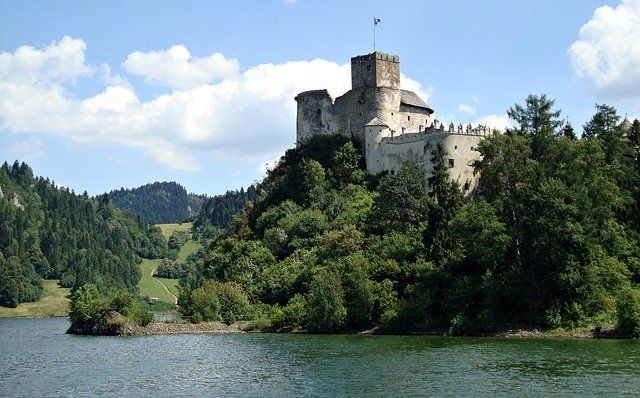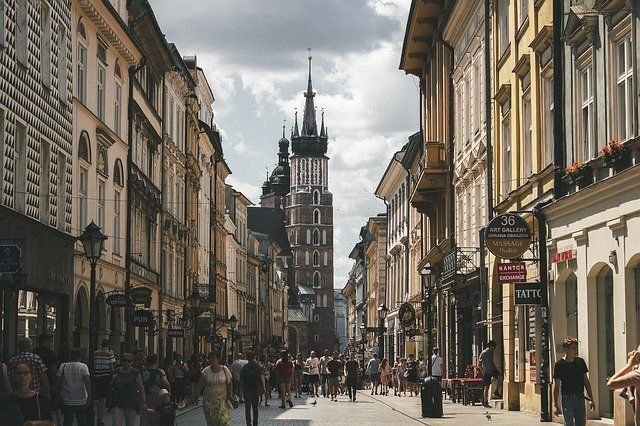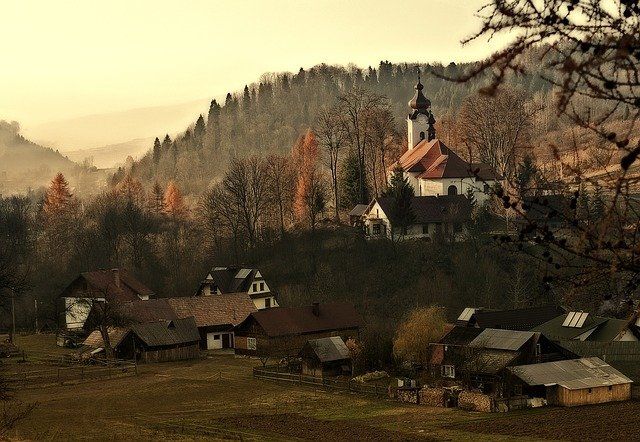In 1966, while England was winning the World Cup football tournament, Poland was marking its millennium as a Christian nation.
Poland has a historical pedigree that pre-dates many contemporary European countries. It has had its great moments but these have been more than matched by dark phases, sometimes as victim, sometimes as oppressor.
Today it is on the brink of joining the European Community, having gone through traumatic changes to meet the EC standards.
Identity
Today, at the beginning of the 21st century, Poland nestles between Germany, the Czech Republic, Slovakia, Ukraine, Belarus, Lithuania and the Russian enclave of Kaliningrad. Its northern border has a coastline on the Baltic.
Tying a country’s neighbours to the date may seem a little strange to many readers. But even in the last 100 years, mainland Europe has witnessed boundary changes agreed by political leaders with the equivalent of a felt tip pen!
The shape and position of today’s Poland is so different to that of 1939. Indeed, the nation as such did not exist during the whole of the 19th century, being divided between the Austrian, Prussian and Russian Empires.

Such a troubled past affects the country’s psyche; hence its urgency to become a full member of NATO and the EU. People are interested in how the foreign media interpret their internal events. They want to be seen as a modern society, leaving behind the Third World status that Communism gave them.
Poland’s reaction to 45 years of post-war Soviet Communism demonstrated how unified and cohesive it is as a nation. It never embraced Communism to the degree that its neighbours did. The cracks that led to the downfall of the regime in Eastern Europe began in Poland.
Roman Catholicism
The Roman Catholic Church acted as the forum for political opposition. The Polish communist bosses knew that, with 95% of the population wedded to the Roman Church, their political decision-making had to achieve a delicate balance between Moscow and Catholicism.
Against the background of this clash of ideologies, Poland has been difficult terrain for gospel work. The Reformation profoundly influenced parts of the nation, but the Jesuits snuffed out that movement by brute force centuries ago.
If there are surviving archives scattered around the towns and cities, there may be a wealth of historical documentation portraying the impact that the Reformed faith once had upon the country (there is scope here for PhD research to be done!).

But, today, to be a Pole means to be a Roman Catholic. To the man in the street, Protestantism is a foreign sect. Evangelicals are very few in number. The Polish State signed a concordat with the Vatican, and laws are now being passed that favour the Roman Church.
Whilst Roman Catholicism has gained greater influence in the corridors of power, it has been losing support amongst ordinary people. Many fear its dominance; and anti-clerical feeling has developed.
This gives openings for the gospel, and Christian young people report that their peers are more willing to listen.
Protestant churches
The strongest region for Protestant churches is Upper Silesia. Parts of that region belonged to Germany before the Second World War, bringing Brethren and Lutheran groups there.
The Evangelical Union churches trace their roots to the work of Lord Radstock amongst the Russian aristocracy. The partition of eastern Poland to the Russian Empire during the nineteenth century allowed this work to spread and churches to be planted.
The Polish Baptist movement was started during the 1850s in a town just outside Warsaw. The Baptistic distinction was maintained by a significant German population and was increasingly accepted by Polish people during the 1920s.
Between the two World Wars there were two groups of Evangelical Baptist churches, German and Slavic. At the end of the 1930s, the two groups came together to form the Evangelical Baptist Church of Poland. This comprised about 35,000 believers in 100 churches. This number was greatly reduced as a result of the last War.

Recent developments
The Protestant churches were organised into various groupings by the post-war Communist authorities. This put the Brethren, Evangelical Union and the Church of Christ into the same group as the Pentecostal Church. Baptists and Lutherans were allowed to register in their own right. The purpose was to effect state control of all religious activities.
The churches did enjoy a degree of freedom under Communism because they were seen as small and insignificant compared to the large Roman Catholic Church.
Probably the geo-politics of the period also gave Protestants some protection, as they had a strong lobbying influence in the United States, Great Britain and Germany.
The period following the downfall of Communism was a difficult time for Evangelicalism, as the underground church made adjustments to come above ground. Today, the churches, in their organisational structures at least, are back to where they were before Communism.
Churches in Poland have not embraced Reformed doctrine, although there are a number of individuals who have come to that position. Some Christians say that they are too small in number to engage in making such distinctions. This outlook shows the basic problem of having untaught churches.
Responsibility
Expository preaching is not widely practised. The country is rife with the sects and a wide spectrum of ‘Christianity’. But there are a number of men who have studied at Bible colleges abroad and embraced the truths of the Reformed faith.
During recent years of political freedom the churches have coped, some with considerable pain. This pain was particularly evident where there was an unhealthy dependency upon western support.
The ‘West will pay’ mentality has not been completely eradicated, but some churches recognise that they have a responsibility to help their poorer brothers and sisters to the east.
There is still a considerable way to go before churches are self-supporting and outward looking, for example, in sending out their own missionary workers.



